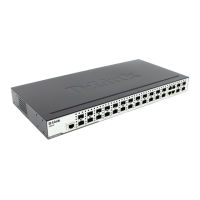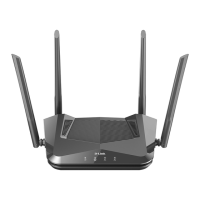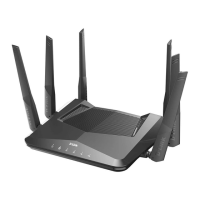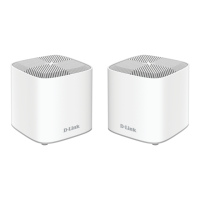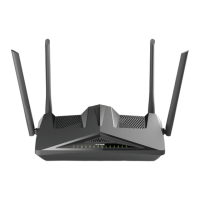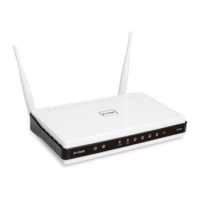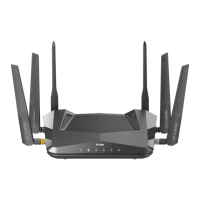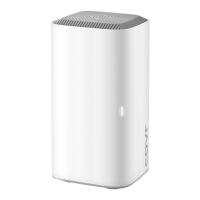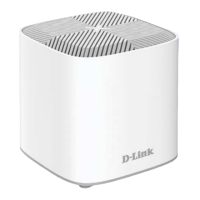xStack® DES-3200 Series Layer 2 Managed Fast Ethernet Switch
71
Bridge Forward Delay
(4-30)
The Forward Delay can be from 4 to 30 seconds. Any port on the Switch spends
this time in the listening state while moving from the blocking state to the forwarding
state. The default is 15 seconds
Tx Hold Count (1-10)
Used to set the maximum number of Hello packets transmitted per interval. The
count can be specified from 1 to 10. The default is 6.
Max Hops (6-40)
Used to set the number of hops between devices in a spanning tree region before
the BPDU (bridge protocol data unit) packet sent by the Switch will be discarded.
Each switch on the hop count will reduce the hop count by one until the value
reaches zero. The Switch will then discard the BDPU packet and the information
held for the port will age out. The user may set a hop count from 6 to 40. The
NNI BPDU Address
Used to determine the BPDU protocol address for STP in service provide site. It
can use 802.1D STP address or 802.1ad service provider STP address.
Click the Apply button to accept the changes made for each individual section.
NOTE: The Bridge Hello Time cannot be longer than the Bridge Max Age. Otherwise, a configuration
error will occur. Observe the following formulas when setting the above parameters:
Bridge Max Age <= 2 x (Bridge Forward Delay - 1 second)
Bridge Max Age > 2 x (Bridge Hello Time + 1 second)
STP Port Settings
STP can be set up on a port per port basis. It is advisable to define an STP Group to correspond to a VLAN group
of ports.
To view the following window, click L2 Features > Spanning Tree > STP Port Settings, as show below:
Figure 4-23 STP Port Settings window
The fields that can be configured are described below:
Parameter Description
Select the starting and ending ports to be configured.
External Cost
This defines a metric that indicates the relative cost of forwarding packets to the
specified port list. Port cost can be set automatically or as a metric value. The default
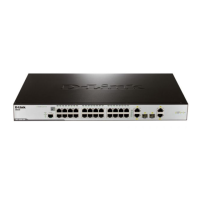
